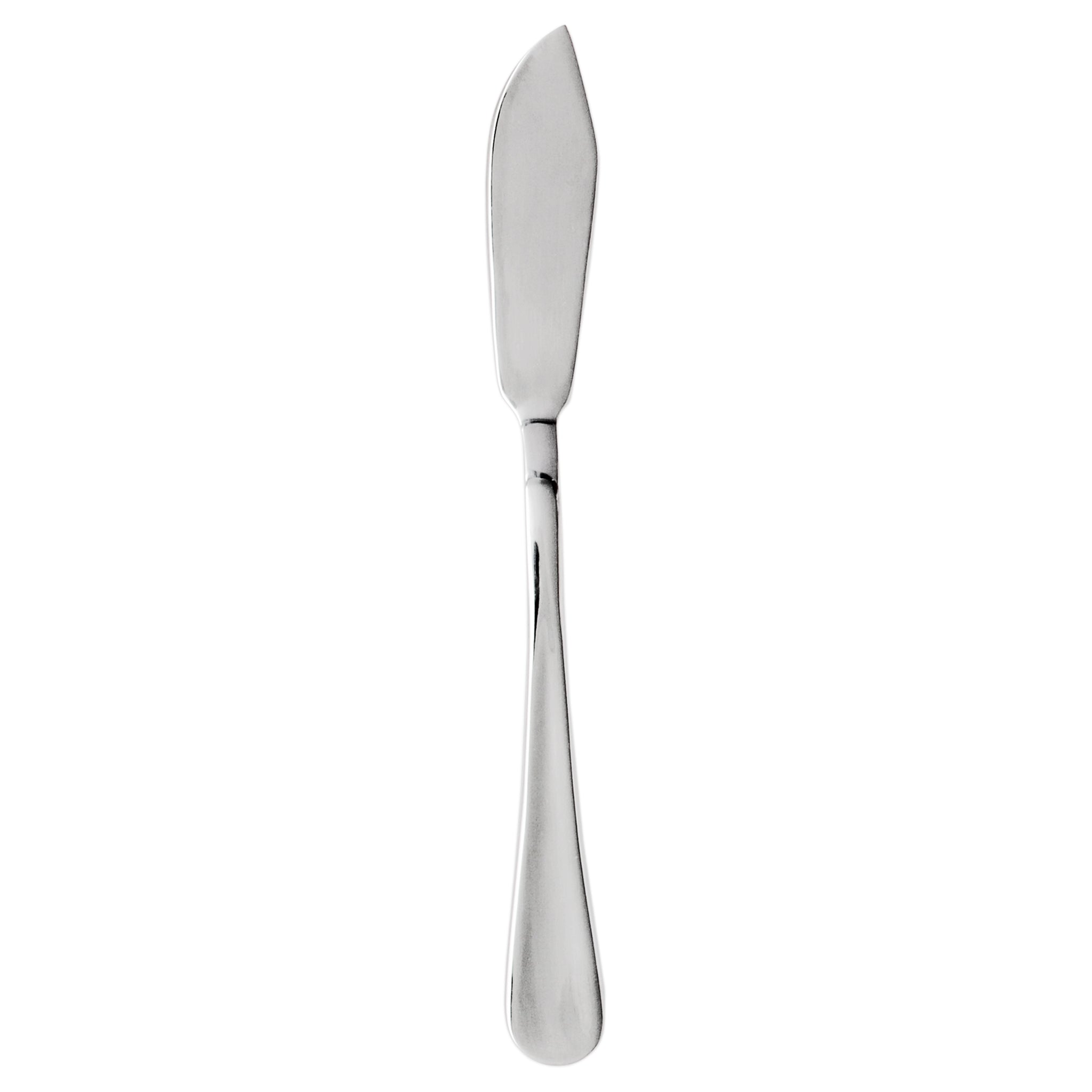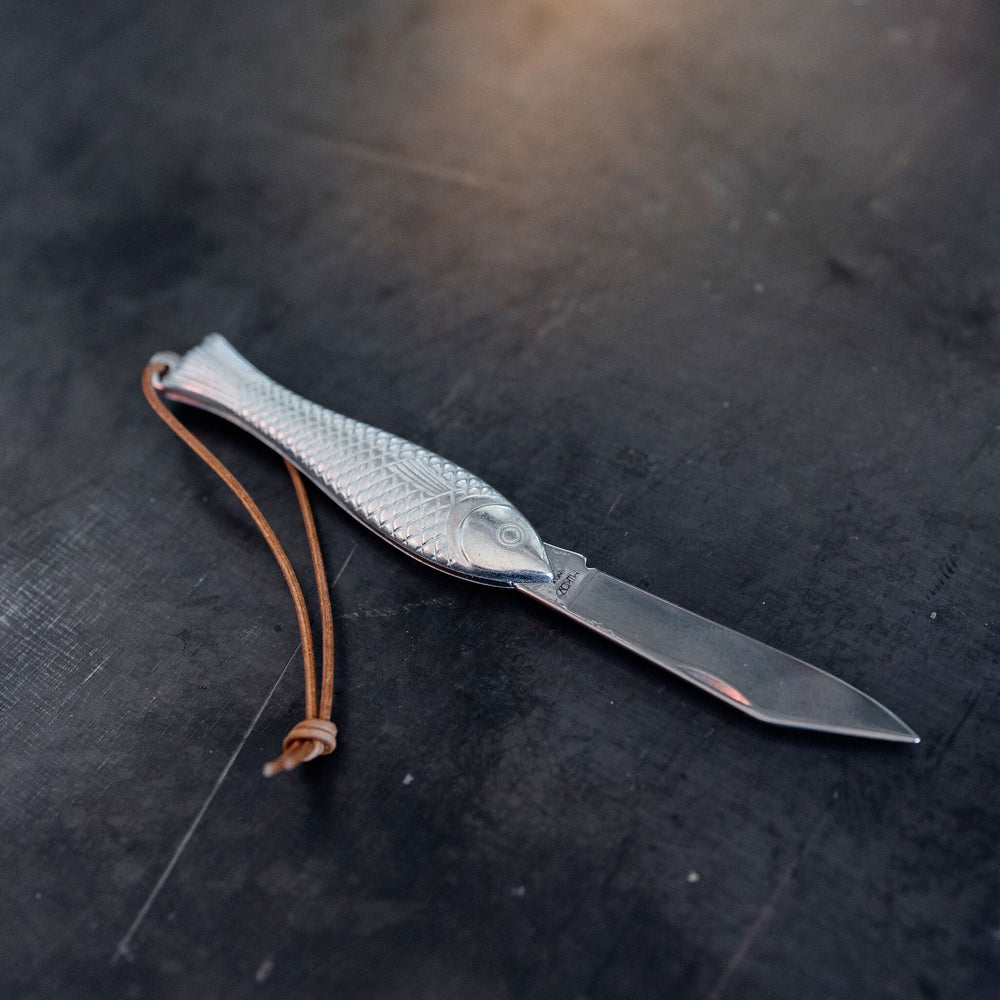How to pick the perfect fish knife for cleaning your fish
The Ultimate Overview to Keeping Your Fish Knife for Long Life and Efficiency
Keeping a fish knife is vital for ensuring its long life and optimum efficiency. Proper care entails a collection of steps, consisting of cleaning, honing, and storage space. Each stage contributes to the knife's efficiency during usage. Comprehending these practices can make a substantial distinction in the life expectancy of this vital device. Lots of individuals neglect critical elements of maintenance that can lead to wear and tear. What are these often-forgotten actions?
Selecting the Right Fish Knife for Your Requirements
When picking the suitable fish knife, what key features should one think about? The blade's versatility is critical, allowing for accuracy while filleting numerous fish species (fish knife). A slim, narrow blade usually improves maneuverability, making it simpler to browse around bones and skin. The material of the blade also plays a critical role; stainless steel provides durability and deterioration resistance, vital for constant direct exposure to water
Additionally, the deal with's layout ought to not be overlooked. It needs to provide a comfy grip, ideally including non-slip products that make sure security throughout usage. The knife's length is one more variable; shorter blades can provide better control, while longer blades may be helpful for larger fish. Lastly, weight is very important; a well-balanced knife enables for extended usage without fatigue. By carefully considering these features, one can pick a fish knife that satisfies particular requirements for reliable fish preparation.
Appropriate Cleaning Techniques After Each Use
Correct cleaning methods after each use are important for keeping the long life and performance of a fish knife. Quickly after filleting fish, it is essential to wash the knife under warm water to remove ranges, sludge, and any recurring fish juices. Making use of a soft sponge or cloth, the user must delicately scrub the blade and take care of, paying unique attention to any kind of holes where debris may accumulate. Avoid making use of abrasive materials that can scrape the blade's surface. After washing, the knife should be completely dried out with a tidy towel to stop moisture-related damage. Applying a food-safe mineral oil occasionally can help maintain its honesty if the knife has a wood manage. Saving the knife in a marked sheath or magnetic strip can additionally safeguard it from unexpected damages and guarantee it remains all set and clean for future use. Consistent adherence to these cleaning methods will certainly enhance the knife's lifespan and performance.
Sharpening Your Fish Knife: Approaches and devices
Sharpening a fish knife is a vital process that boosts its performance and guarantees tidy cuts while filleting. To attain optimal sharpness, a number of tools can be utilized. A whetstone is thought about one of the most reliable approaches, permitting for accurate control over the honing angle. Individuals should damp the rock and preserve a regular 20-degree angle while gliding the blade throughout its surface.
A sharpening pole can be utilized for regular maintenance, realigning the blade's side without eliminating material. For comfort, electric sharpeners offer a fast option, though they may not provide the very same level of skill as hands-on methods.
No matter the selected technique, it is vital to completed with a natural leather strop to polish the side, making certain a lancinating surface. Regular developing not only extends the life of the fish knife however also enhances the total performance of the filleting process.
Keeping Your Fish Knife for Ideal Security
After honing a fish knife, interest must turn to its storage space to keep the blade's honesty and efficiency. Correct storage is necessary for preventing damage, dulling, and corrosion. Preferably, a fish knife should be saved in a safety sheath or knife roll, which shields the blade from contact with environmental aspects and other tools (fish knife). Magnetic strips can likewise work, enabling obtainable and secure storage space while keeping the blade protected

Normal Upkeep Routines to Follow
A consistent maintenance regimen is necessary for maintaining the capability and appearance of a fish knife. Regular cleansing after each use is crucial; rinsing the blade with click here cozy water and mild soap removes any kind of residue. It is suggested to dry out the knife extensively to stop rust. Regularly, a light application of food-safe mineral oil can assist protect the blade and maintain its luster.

Keeping the fish knife in a safety case or sheath stops unintended damage and maintains it all set for use. Complying with these upkeep routines will dramatically enhance the long life and effectiveness of the fish knife.
Regularly Asked Concerns
Can I Utilize My Fish Knife for Other Kinds Of Fish?
Yes, a fish knife can be used for various other sorts of fish. The performance may differ depending on the knife's layout and the details fish being refined, affecting efficiency and precision during prep work.
What Materials Are Finest for a Fish Knife Blade?
Stainless steel and high-carbon steel are taken into consideration the best products for a fish knife blade. Stainless steel uses rust resistance, while high-carbon steel offers exceptional intensity and side retention, essential for efficient fish preparation.
Just how Commonly Should I Change My Fish Knife?
A fish knife should generally be replaced every three to five years, depending on usage and maintenance. Routine inspection for signs of wear or damages can also assist figure out the right time for substitute.
Exist Particular Brand Names Known for Top Quality Fish Blades?
Particular brands, like Wüsthof, Victorinox, and Rapala, are renowned for producing high-grade fish blades. These brand names are identified for their durability, sharpness, and ergonomic layouts, making them preferred selections amongst angling lovers and experts alike.
Can Temperature Level Affect My Fish Knife's Performance?
Temperature can dramatically influence a fish knife's efficiency. Extreme warm might create blade products to warp, while cold problems can lead to brittleness. Preserving an optimum temperature level is crucial for protecting the knife's functionality and resilience.
The knife's size is an additional element; shorter blades can provide much better control, while longer blades may be helpful for bigger fish. Quickly after filleting fish, it is vital to rinse the knife under cozy water to get rid of scales, sludge, and any recurring fish juices. After honing a fish knife, focus has to transform to its storage space to keep the blade's stability and performance. Preferably, a fish knife need to be stored in a safety sheath or knife roll, which guards the blade from call with other utensils and environmental variables. Yes, a fish knife can be utilized for other types of fish.